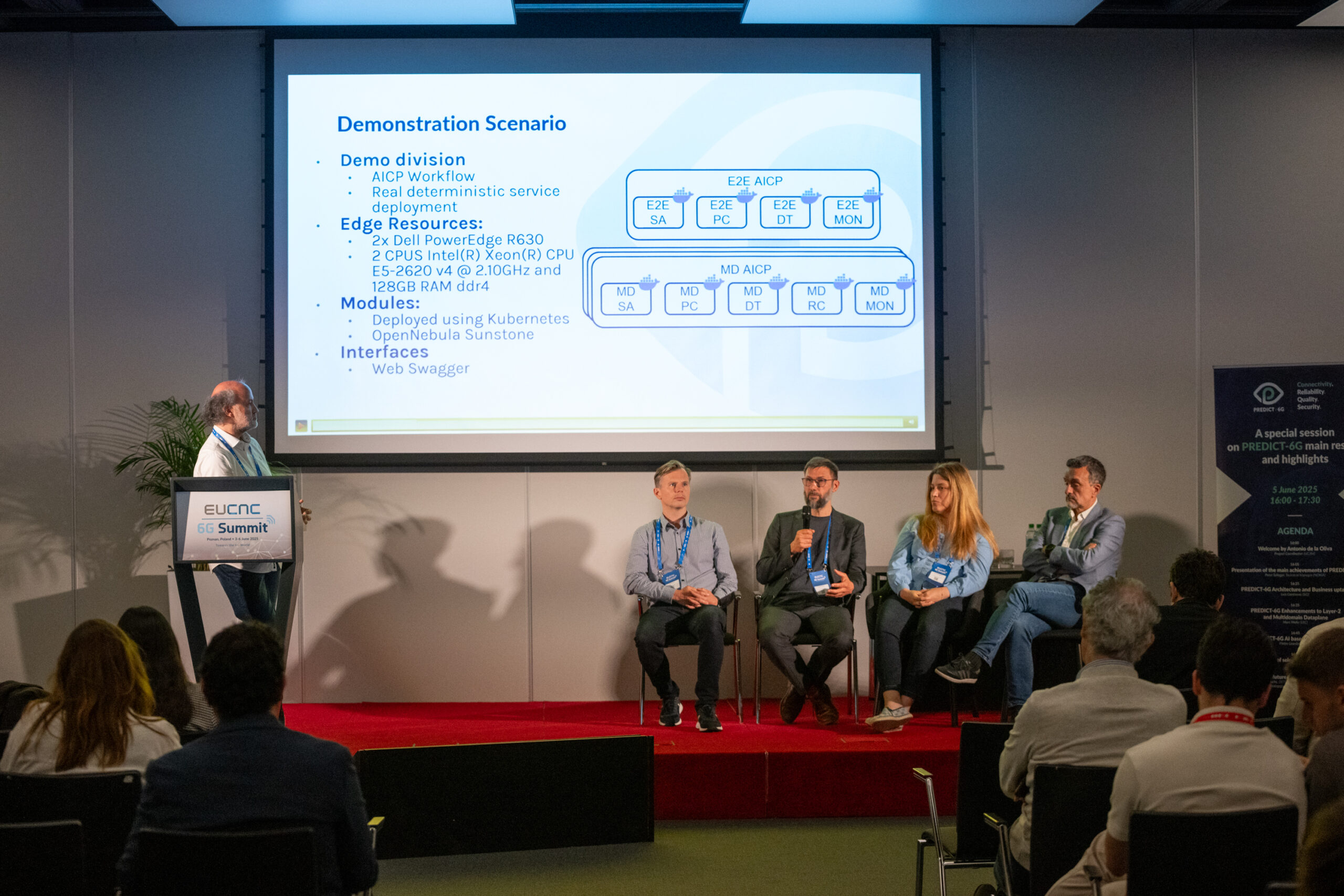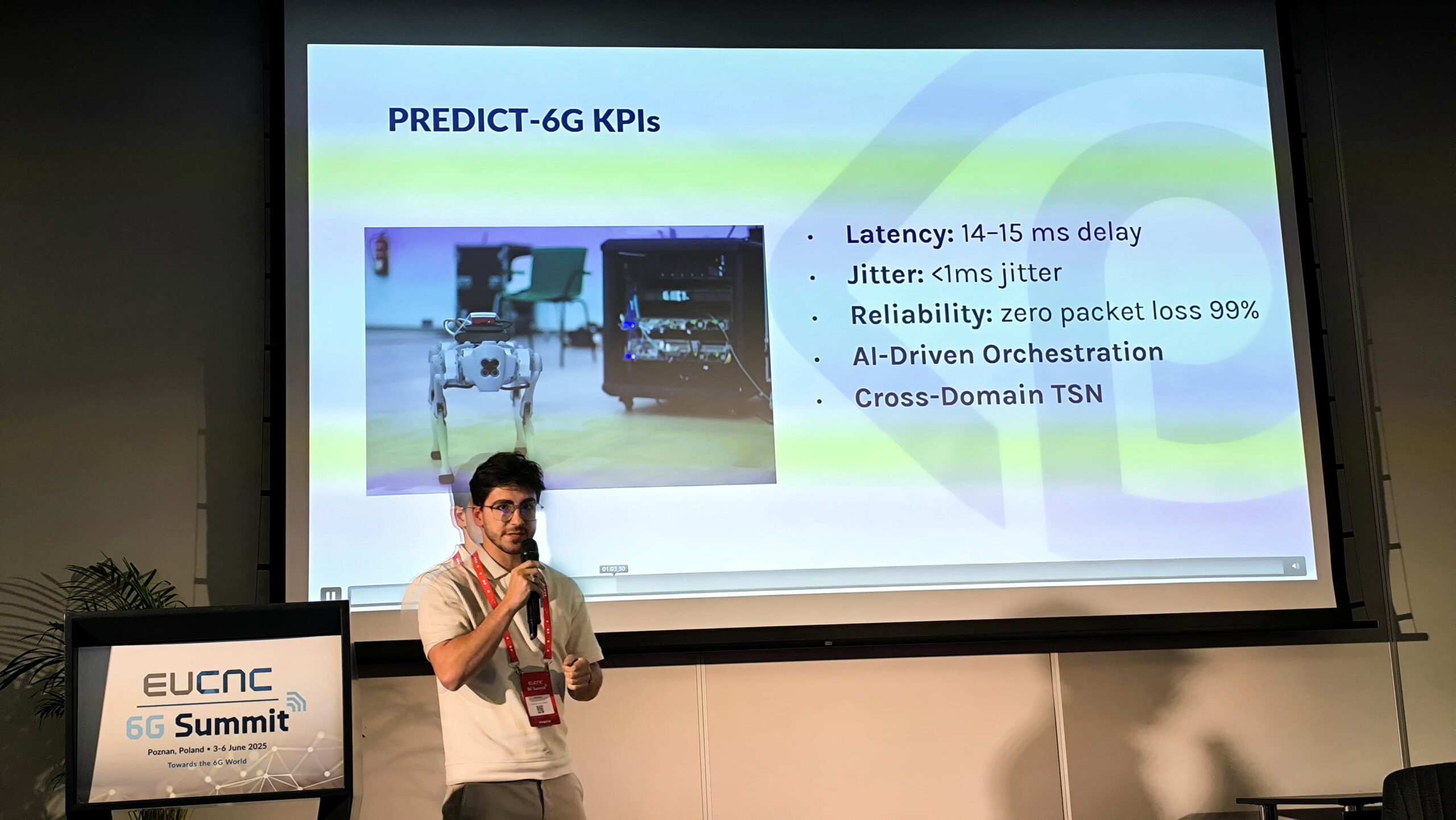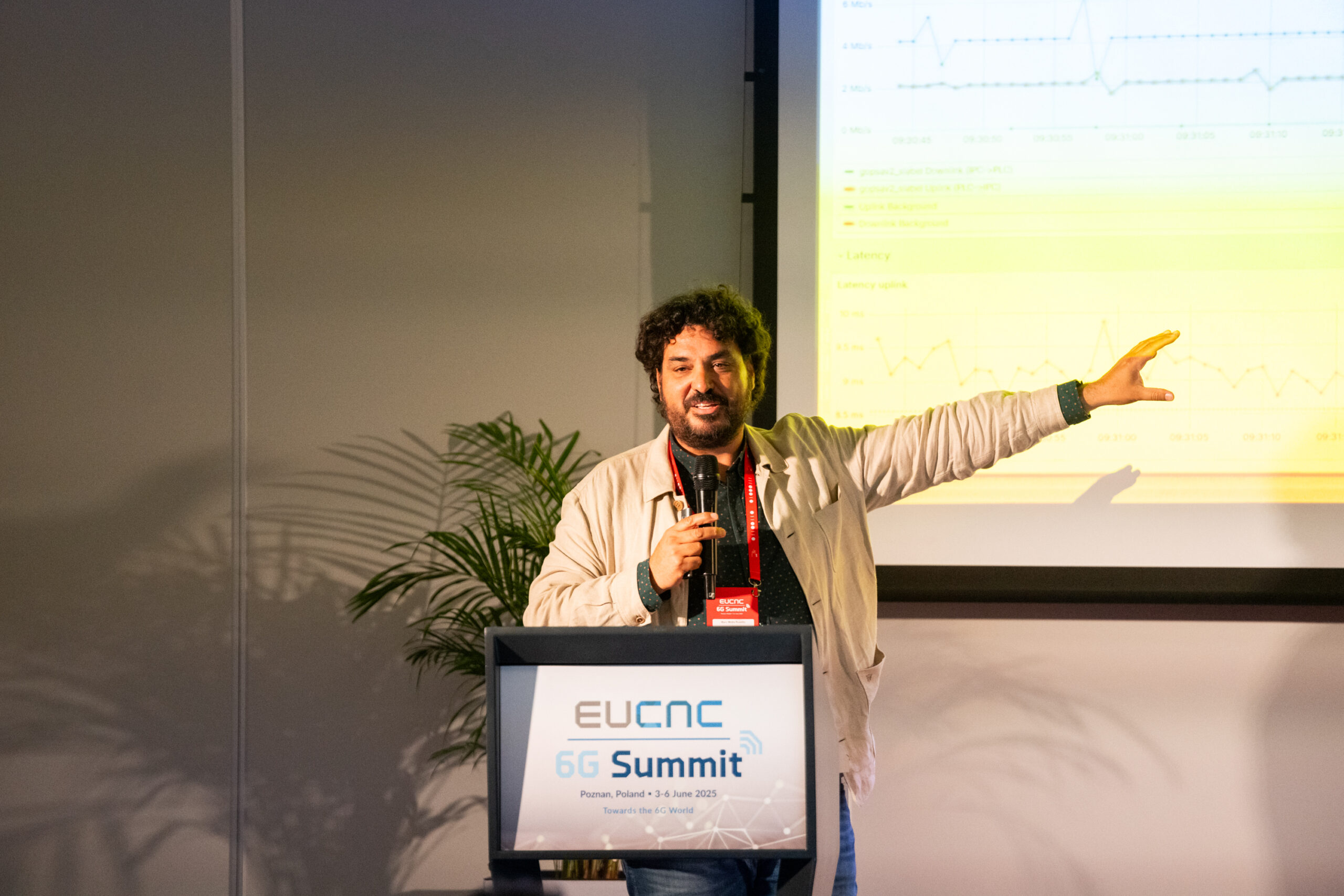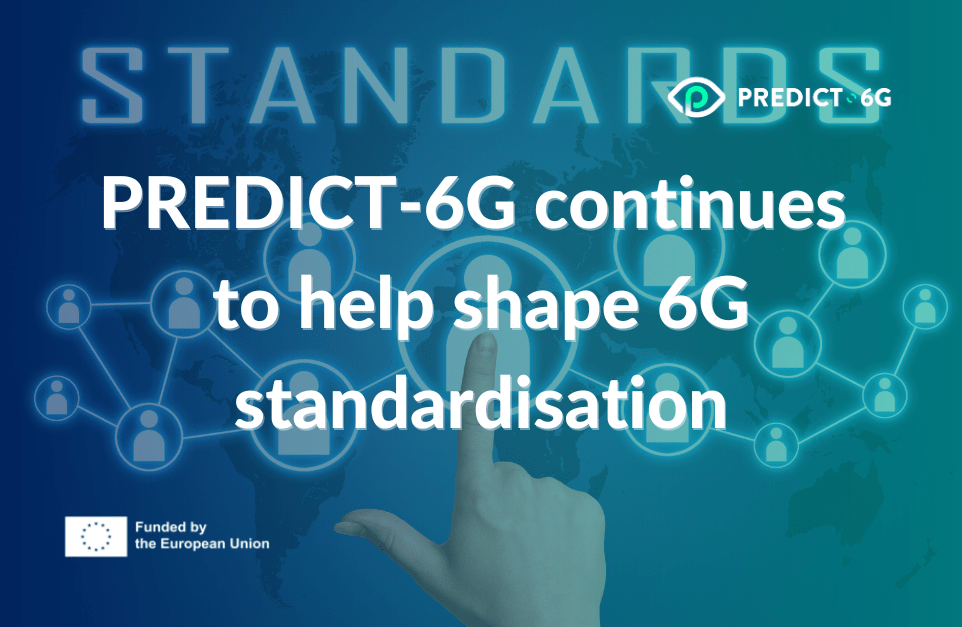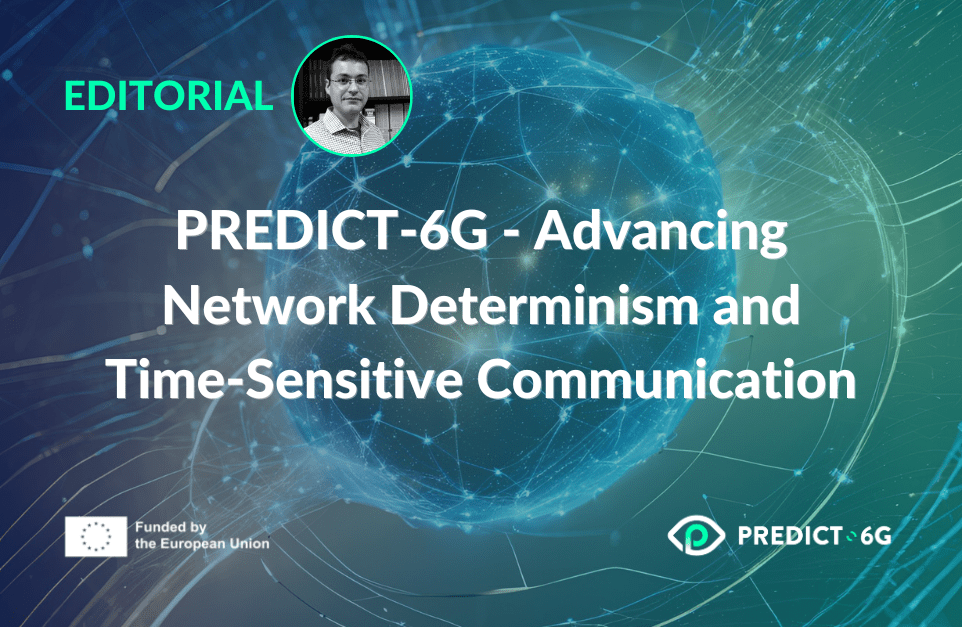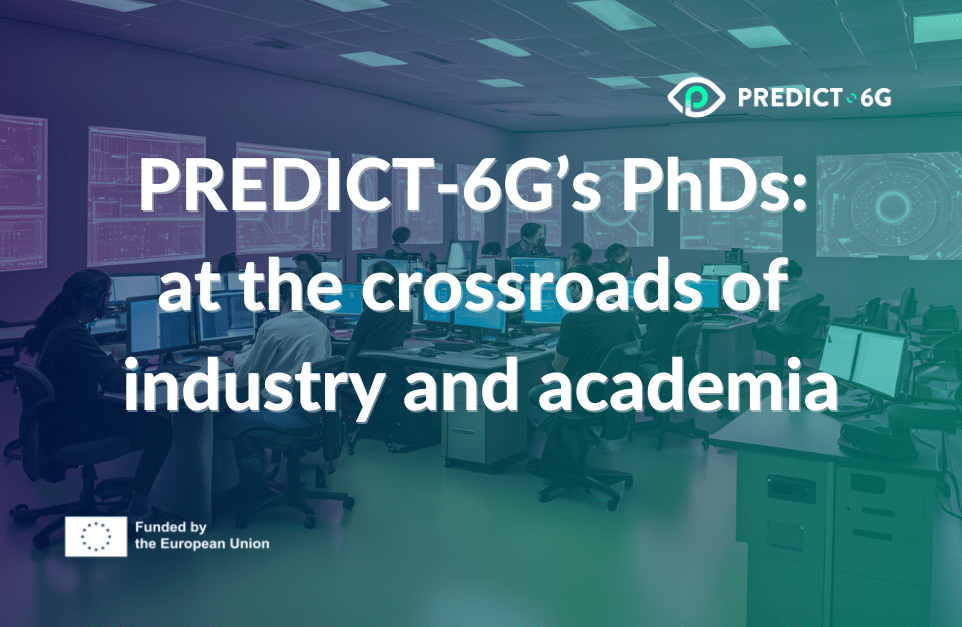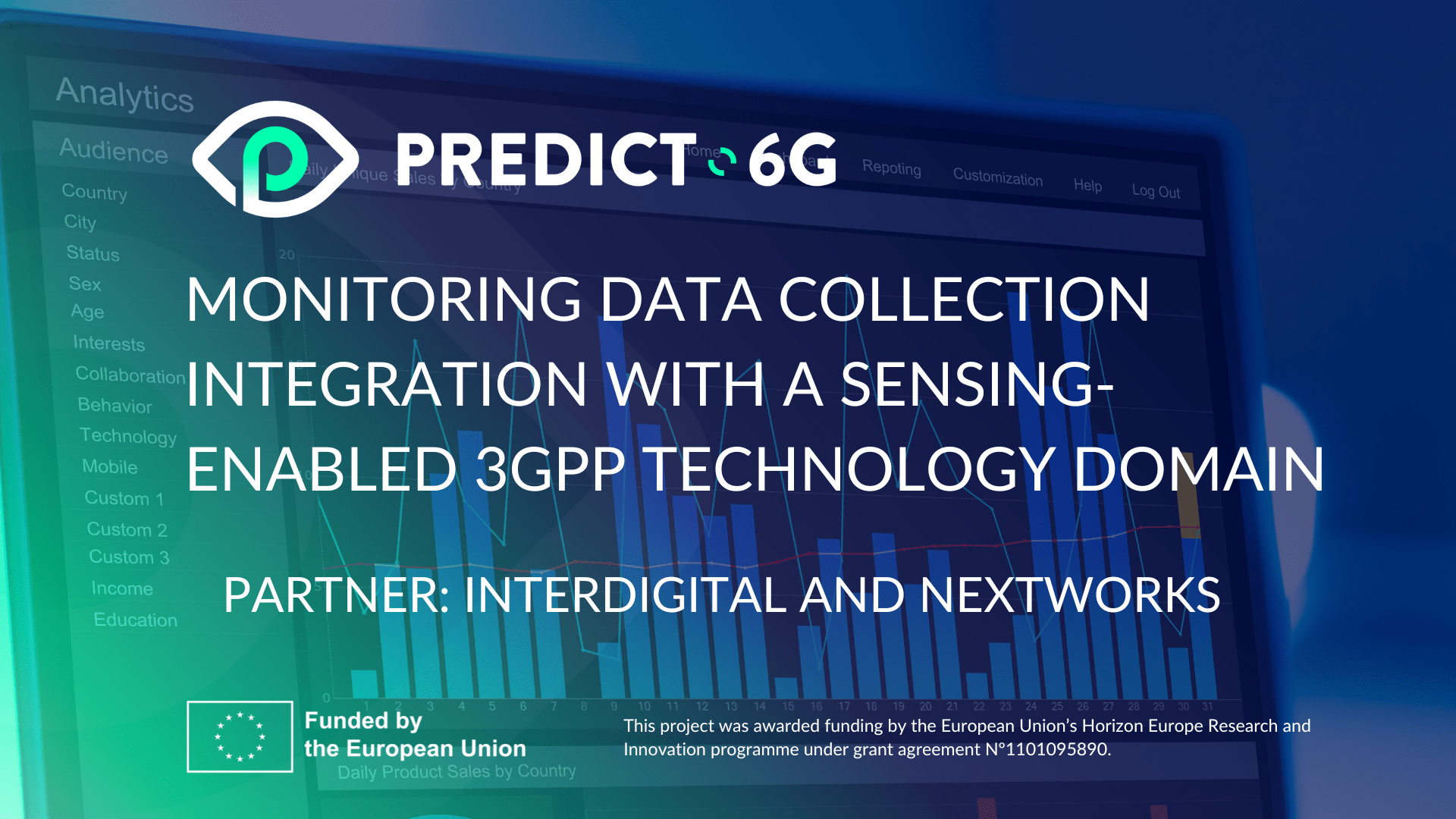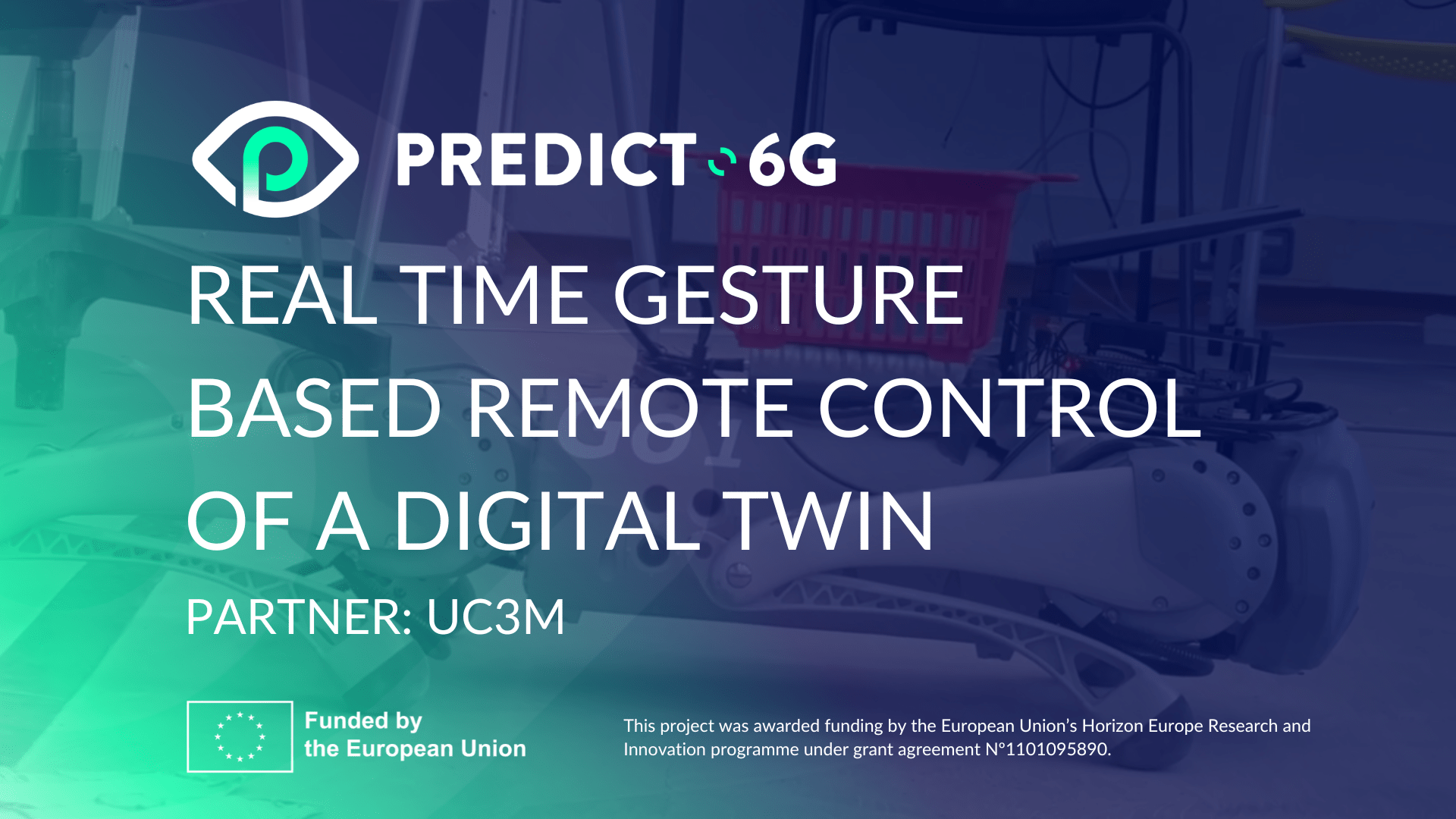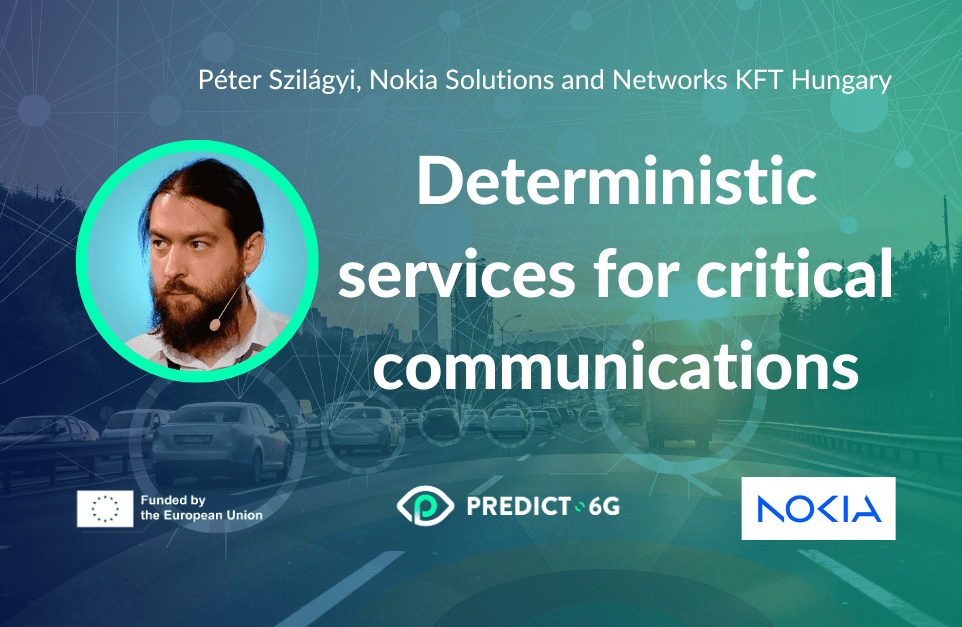PREDICT-6G at EuCNC & 6G Summit 2025
The 2025 EuCNC & 6G Summit took place from 3 to 6 of June in Poznan, Poland. It brought together cutting-edge research and world-renowned industries and businesses. In recent years, EuCNC has become the event of reference for the telecommunications sector, attracting more than 1,000 delegates from over 40 countries worldwide to present and discuss the latest developments in the industry. The exhibition featured over 50 demos and booths showcasing the newest 6G and SNS technological achievements, developed in the context of the Smart Networks and Services Joint Undertaking (SNS JU) and other EU R&I programmes.
PREDICT-6G participation marked its third consecutive year at the EuCNC & 6G Summit. This edition was especially important as it hosted PREDICT-6G's final event, marking the end of two and a half years of intensive research, development and collaboration within the Horizon Europe SNS JU.
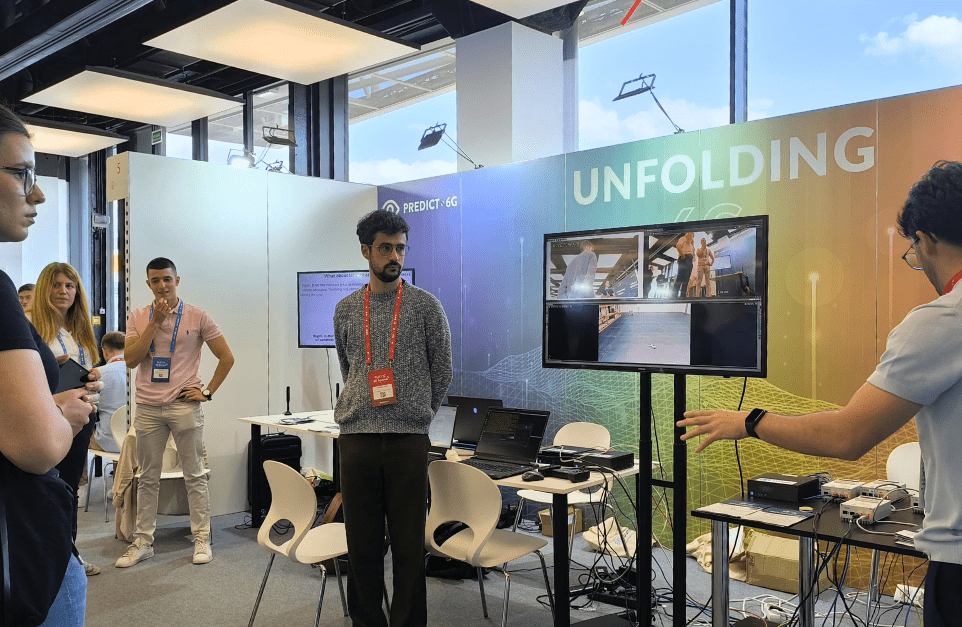
Throughout the four-day event, PREDICT-6G was well represented in various activities and sessions. The project shared an exhibition booth with DESIRE6G and MultiX, providing attendees with a hands-on overview of some of the most impactful technologies developed within the project. Visitors could explore through the different demos how PREDICT-6G contributes to the development of the next generation of deterministic and reliable 6G networks with a focus on multi-domain and multi-technology integration.
On the opening day, PREDICT-6G participated in the workshop titled 'Integrating Network Digital Twinning into Future AI-Based 6G Systems'. Represented by Claudio Casetti from Politecnico di Torino, the project joined a broader discussion involving several EU initiatives: 6G-TWIN, SEASON, DESIRE6G, VERGE, DETERMINISTIC6G, and 6G-SANDBOX. The workshop provided a platform for sharing innovative perspectives on how digital twins can enhance the sustainability, performance and security of networks, which are critical pillars for future 6G infrastructures.
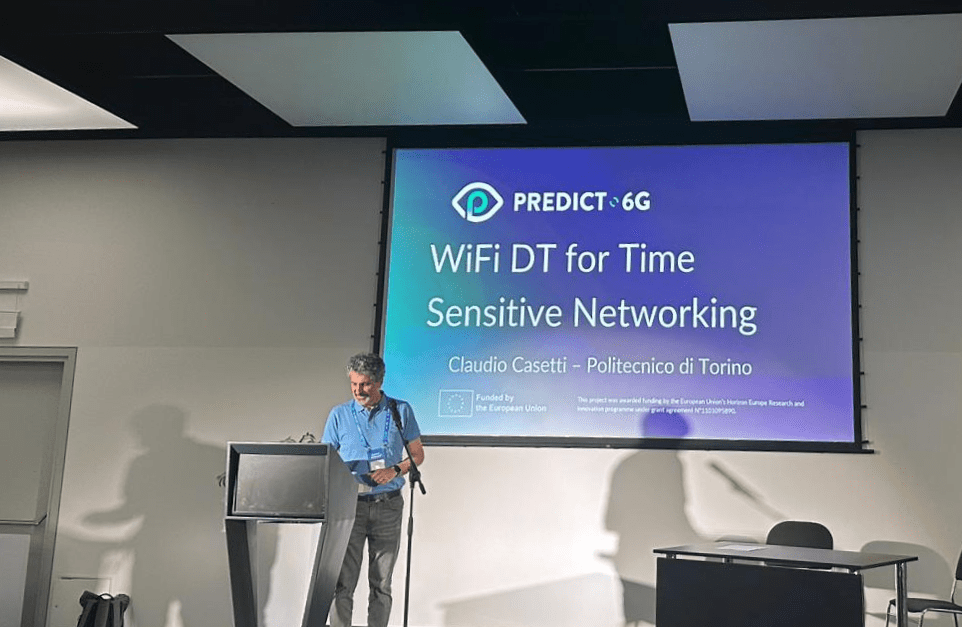
PREDICT-6G's final event
The highlight of PREDICT-6G's presence at EuCNC 2025 was undoubtedly the final event, which took place on 5 June as part of the conference programme. The event began with opening remarks from Antonio de la Oliva, the project coordinator from Universidad Carlos III de Madrid, and Odysseas Pyrovolakis, PREDICT-6G's Project Officer, who formally welcomed the participants and emphasised the importance of the SNS JU in promoting European leadership in 6G technologies. This was followed by an in-depth overview of the project’s main achievements since its launch in January 2023, presented by Zoltán Vincze from Nokia. Luis Miguel Contreras Murillo from Telefónica then offered architectural and business perspectives, providing a strategic view of the project’s long-term impact and relevance.
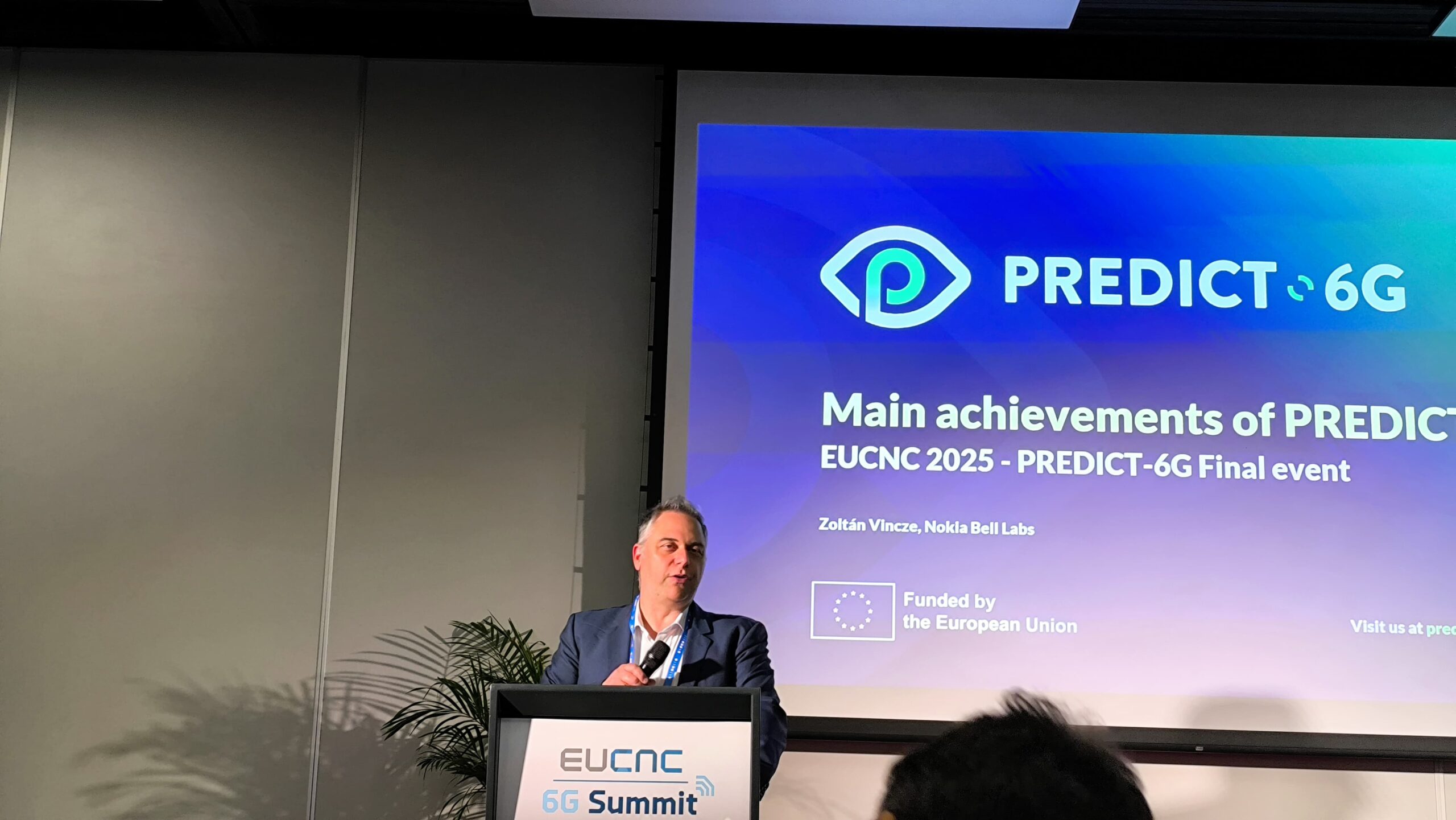
Marc Mollà Roselló from Ericsson and Pietro Giuseppe Giardina from Nextworks provided technical insights, delving into key innovations in the data plane, AI-driven control plane, and network digital twin concepts. The session also included live demonstrations of selected technologies developed within the project, showcasing their readiness for use in the real world.
The Final Event concluded with a panel discussion on the future of dependable networking. The panel, moderated by Valerio Frascolla of Intel and PREDICT-6G Impact Creation Leader, featured expert contributions from Chrysa Papagianni (DESIRE6G), Associate Professor at the Informatics Institute - University of Amsterdam; Joachim Sachs (DETERMINISTIC6G), Senior Expert at Ericsson; Josep Vidal (5GSmartFact), Full Professor at the Universitat Politècnica de Catalunya; and Zoltán Vincze (PREDICT-6G), Senior Research Engineer at Nokia Bell Labs. The discussion touched on cross-project synergies, future research directions, and policy challenges ahead.
In addition to the sessions, the conference offered consortium members a special opportunity to reunite in person, with many doing so for the last time, as the official conclusion of PREDICT-6G approaches at the end of June 2025. The EuCNC & 6G Summit provided a fitting and timely opportunity to reflect on the impactful journey of PREDICT-6G.
If you want to stay updated about PREDICT-6Gt, subscribe to our newsletter and follow us on Twitter, LinkedIn and Bluesky!
Record available - 6G-PD Webinar Series: #3 Next challenges for 6G in deterministic and programmable mobile networks
The third round of the 6G Programmable Deterministic Webinar Series took place on 20 May 2025, under the title ‘Next challenges for 6G in deterministic and programmable mobile networks’.
The 6G Programmable Deterministic Webinar Series: #3 “Next challenges for 6G in deterministic and programmable mobile networks” brought together 88 participants, from researchers to industrials, across 21 different countries. 35 SNS projects attended the webinar.
The session began with a presentation on DETERMINISTIC6G titled 'Lessons from DETERMINISTIC6G and the Way Ahead for 6G’, delivered by James Gross, Professor at KTH. Gergely Pongracz, Expert of programmable networks at Ericsson Hungary concluded the presentations with a talk entitled 'Beyond DESIRE6G: From AI and Cloud-Native to Goal-Native 6G'.
The agenda concluded with an animated discussion with the audience. The webinar was moderated by Antonio de la Oliva, associate professor at the Universidad Carlos III de Madrid and PREDICT-6G’s Project Coordinator.
The presentations are available here.
The recording of the seminar is available here or below.
The 6G Programmable Deterministic Webinar Series is a collaborative initiative between PREDICT-6G, DESIRE6G and DETERMINISTIC6G, aiming to delve into the intricate and transformative aspects of these sister projects, with expert speakers exploring the latest developments and innovations shaping the future of 6G technology. Each session will provide in-depth information and foster key discussions for practitioners and researchers working on the next generation of wireless communications.
PREDICT-6G continues to help shape 6G standardisation
By Sebastian Robitzsch (InterDigital Europe Ltd), with the collaboration of Rafael Rosales (INTEL), Petro Giardina (Nextworks), and Luis M. Contreras (Telefónica).
One of the key exploitation routes in PREDICT-6G is the impact of relevant Standardisation Development Organisations (SDOs) on the topic of deterministic networking. For that purpose, the project conducted a thorough assessment of the architectural proposition [1] as well as their Multi-Domain Data Plane (MDP) [2] and AI-Driven Control Plane (AICP) [3]. The outcome of this assessment resulted in a scientific paper which was accepted for presentation at the GLOBECOM 2024 Workshop on 6G Architecture (6G Arch) that will take place in December 2024 in South Africa. The paper provides a holistic drawing of PREDICT-6G system proposition with the considered domains DetNet-Enabled 3GPP, TSN-Enabled 3GPP, Wi-Fi and TSN. The assessment of which SDO covers which system components is then overlayed in the figure and colour coding is used to depict the assessment; the figure below provides this assessment.

As one can observe, all key SDOs in the telecommunication space show up, i.e. 3GPP, IETF, IEEE and ETSI. Below, a selected set of SDO working groups (WGs) provide more insights on the standardisation activities of PREDICT-6G partners and the technology developed within the project.
IETF PCE
Telefónica (TID) and the Polytechnic University of Catalonia (UPC) have been contributing to the IETF Path Computation Element (PCE) WG with the objective of extend the PCE so that can consider metrics defined statistically. With the current state of the art, the PCE is able of determining paths according to constraints expressed in the form of metrics. The value of the metric can be signalled as a bound or maximum, meaning that path metric must be less than or equal such value. While this can be sufficient for certain services, some others, such as deterministic services, can require the utilisation of Precision Availability Metrics (PAM). The PREDICT-6G contribution aims to define a new PCE object, namely the PRECISION METRIC object, to be used for path calculation or selection for deterministic networking services with performance requirements expressed as Service Level Objectives (SLO) using PAM.
IEEE 802.11
To improve determinism in Wi-Fi communications, Intel has proposed ideas to the 802.11 UHR Working Group (Wi-Fi 8) at the IEEE 802.11-23/0936r0 meeting in July 2023. The ideas are related to a medium efficient scheduled channel access in next generation 802.11. The proposed ideas could help to improve triggered and scheduled channel access for better medium utilization with: a) re-structure transmission opportunity to efficiently schedule bursty traffic together with others. b) upfront resource allocation/assignment, and c) reduction of OTA signalling overhead by reusing repeating information.
ETSI ISG MEC
During 2023/2024, Nextworks proposed and discussed some extensions to the ETSI MEC GS 037 related to the support of container-based applications, in several ETSI MEC ISG meetings. These extensions aim at enabling the support of a variety of industrial container-based applications, which can be orchestrated at the edge of the network, empowering the reliability while reducing the latency, in line with the industry requirements for wireless networks. Furthermore, the software containerization allows the orchestration of the applications faster than the correspondent in virtual machines, significantly reducing the relocation time and service downtime. The proposed extensions have been accepted.
ETSI ISG ISAC
The latest ETSI ISG on Integration Sensing and Communications (ISAC) received a use case by InterDigital on Digital Twinning-based collaborative robots, with stringent communications requirements to exchange sensing data between terminals and the network in a deterministic fashion. This use case has now been adopted and forms the basis for challenges and proposed solutions in the system space of 6G mobile systems.
—
[1] - D1.2 PREDICT-6G framework architecture and initial specification, available at: https://zenodo.org/records/12167838
[2] - D2.2 Implementation of selected release 1 PREDICT-6G MDP innovations, available at: https://zenodo.org/records/12167751
[3] - D3.2 Implementation of selected release 1 AI-driven inter-domain network control, management and orchestration innovations, available at: https://zenodo.org/records/12167665
PREDICT-6G – Advancing Network Determinism and Time-Sensitive Communication
The PREDICT-6G project has made remarkable progress in advancing its mission to develop deterministic, predictable and time-sensitive network systems, positioning ourselves at the forefront of the research and technology development that will shape the future of wireless and fixed networks.
Achievements of the Past Year
Over the past year, PREDICT-6G has evolved from fundamental research to actionable technological innovation, as we moved from 6G use case analysis and system architecture definition to the actual development of the data plane and control plane technology.
These are some of the key accomplishments during this period:
- Use Case Analysis and Architecture Development
In the past months, we focused on the in-depth analysis of potential 6G use cases covering areas that require extreme reliability, such as industrial automation and critical communications. These provided essential information on network determinism requirements for a novel architecture capable of supporting 6G’s time-sensitive services. Security implications were carefully considered, recognising that 6G networks will be heavily integrated into critical infrastructure. We also laid the groundwork for business analyses that would ensure the economic feasibility and sustainability of the developed solutions.
- Advancements in Data Plane Technology - The MDP
A core focus of our work has been the enhacement of existing network technologies, specifically 3GPP and IEEE 802.11, to meet the demands of time-sensitive communication. To reduce network jitter - a crucial requirement for many real-time applications - we developed new mechanisms at the Radio Access Network (RAN) level, for 3GPP and IEEE 802.11. In addition, we have designed and implemented bridging systems to connect IEEE 802.1 Time-Sensitive Networking (TSN) and 3GPP networks. This interconnection is essential to provide seamless end-to-end support for time-sensitive services, especially in mixed technology environments that integrate wireless and wired communication systems.
Our most significant accomplishment in the Data Plane area has been the integration of various networking technologies into a unified Deterministic Networking (DetNet) based data plane. To achieve this, we developed multiple encapsulation mechanisms that allow different network standards to operate cohesively. This integration guarantees the transmission of deterministic data flows with strict latency and reliability, key features for applications requiring real-time responses. Open APIs were defined to facilitate interaction between the Data Plane and the Control Plane, enabling a more efficient and dynamic network management.
- Control Plane and Management Functions - The AICP
The Control Plane, which orchestrates and manages the highly diverse technologies of the Data Plane, has been another critical area of development. Our efforts over the past year involved creating new abstractions that allow the different technologies comprising our Data Plane - 3GPP, IEEE 802.11, and IEEE 802.1 TSN - to interoperate seemessly. Moreover, the necessary management functions identified are now being translated into the implementation of essential services and corresponding APIs.
These management functions and abstractions enable greater flexibility and scalability in controlling time-sensitive services across heterogeneous networks, ensuring that the necessary quality of service (QoS) parameters are met.
Looking ahead - Demonstrating the technologies in the real-world
As we approach the final stage of the project, PREDICT-6G is focused on the implementation, demonstration and refinement of the technologies developed in real-world environments in collaboration with leading European research labs in Spain and Hungary.
In the 5TONIC lab, located in Madrid, we are working towards a fully integrated Data Plane demonstration that includes the IEEE 802.11, IEEE 802.1 TSN, and 3GPP domains. This demonstration will show the real-world capabilities of our technologies, focusing on a specific use case: gesture-based remote control of a robot. This application is particularly demanding in terms of latency and reliability, making it an ideal candidate to test the performance of our deterministic network solutions. The successful implementation of this use case will demonstrate how 6G networks can facilitate advanced human-machine interaction in highly time-sensitive environments.
At the Budapest Nokia Lab, we are working on a complementary demonstration focused on critical services enabled by digital twins. This demonstration will show how deterministic networks can support highly sensitive and mission-critical applications, such as industrial automation and remote operation, by ensuring that the digital twin remains perfectly synchronised with its physical counterpart.
We anticipate that these demonstrations will validate the unique capabilities of the PREDICT-6G technologies, providing evidence of their applicability to future 6G networks. By the end of this project, we expect to have made significant advances that will shape the future of 6G, not only in terms of technology, but also in supporting critical real-time applications across multiple sectors.
If you want to stay updated about PREDICT-6Gt, subscribe to our newsletter and follow us on Twitter and LinkedIn!
PREDICT-6G’s PhDs: at the crossroads of industry and academia
In the rapidly changing world of technology, cooperation between academia and industry drives innovation and creates tangible societal benefits. The European Commission’s 'New Codes of Practice for industry-academia co-creation and citizen engagement for knowledge valorisation' encourages collaboration between research institutions and businesses. The guidelines promote knowledge valorisation, knowledge transfer and co-creation, fostering an environment where innovative solutions can flourish. PhD students, at the intersection of deep academic knowledge and practical industry needs, play a pivotal role in bridging the gap.
PREDICT-6G nurtures a thriving research-industry collaboration, especially through the involvement of young researchers. As interviews with some of the PhD students involved in the project show, the experience can be transformative for them, offering them the opportunity to shape the future of technology participating in cutting-edge projects while at the same time perfecting their research skills.
Academia-Industry Collaboration: A Pathway for PhD Growth
For PhD students, participating in research projects involving academic and industrial partners brings unique benefits. As Alejandro Calvillo from UC3M, a PhD student in Service Management and Orchestration, notes, joint research offers "insights into the current situation of innovation in the industrial field" while helping researchers "focus ideas on real ground." This real-world application of their work sharpens research goals and enhances students' ability to think practically, solving challenges relevant to the industry.
David Rico, whose PhD focuses on time-sensitive networking (UC3M), echoes this sentiment, emphasising how PhD students bring "new and fresh energy" to projects, contributing innovative ideas while learning from industry veterans. For Rico, collaboration requires excellent communication skills, given the need to manage numerous relationships and timelines. He underlines that constant updates and communication between academic and industrial partners ensure that projects run smoothly and stay on track.
Beyond the technical and interpersonal skills gained, industry collaborations allow PhD students to see their research come to life in real-world scenarios. This is a crucial motivator for Marta Blanco, an industrial PhD candidate in Telematics (Telefónica), whose thesis on deterministic network solutions aligns with PREDICT-6G aim to develop a predictable and reliable 6G network. For Marta, working closely with industry provides valuable insights into the practical challenges that current research must address, shaping both her academic journey and the future of communications technology.
PhD Involvement in PREDICT-6G: A Case Study
The PREDICT-6G project is a prime example of how academia-industry partnerships can lead to technological breakthroughs, particularly in a fast-evolving field like 6G. PhD students, such as those involved in PREDICT-6G, play an essential role in driving research forward. Their work, guided by academic mentors and informed by industry needs, helps advance the project objectives while contributing directly to their doctoral research.
Alejandro Calvillo's involvement in Work Package 3 (WP3), which merges AI concepts with the control plane, is closely related to his thesis on management orchestration. He describes his work in PREDICT-6G as an essential component of his research, allowing him to test orchestration strategies that will shape future network management. Similarly, PREDICT-6G has enabled David Rico, who contributes to Work Package 2 (WP2), to explore real-life applications of time-sensitive networks, ensuring his research is based on practical results.
Marta Blanco, whose thesis aligns directly with PREDICT-6 G's goal of developing deterministic networks, values the project for providing her with in-depth knowledge of deterministic solutions. She is gaining experience not only through academic research but also by seeing how these solutions can be applied in industrial settings. She believes this practical experience will be an important asset as she moves forward in her career, opening up new avenues for research and collaboration.
All three PhD students - Alejandro, David and Marta - agree that participation in Horizon Europe projects such as PREDICT-6G will have a lasting impact on their academic and professional careers. They also stress the importance of encouraging more participation of PhD and postdocs in R&D projects, as young researchers bring new perspectives that can help achieve breakthroughs in 6G communication networks and other emerging fields.
If you want to stay updated about PREDICT-6Gt, subscribe to our newsletter and follow us on Twitter and LinkedIn!
DEMO: Monitoring Data collection Integration with a Sensing-Enabled 3GPP Technology Domain
Use cases are at the heart of PREDICT-6G. They are the way for our research and use case providers to experiment, validate and demonstrate how PREDICT-6G technologies enable a reliable, predictable and time-engineered 6G network. Sebastian Robitzsch from InterDigital and Matteo Ravalli from Nextworks led the "Monitoring Data collection Integration with a Sensing-Enabled 3GPP Technology Domain" demo.
This demonstration presents a Multi-Domain Monitoring Data collection for the PREDICT-6G project. It automates the collection of Layer 4 latency and sensing data from a 3GPP domain, feeding it into an AI-driven control plane and a digital twin application. The demonstration integrates the AI-driven control plane (AICP) to manage service provisioning and data monitoring.
Key features include:
- Collection of node information, link characteristics and sensing data.
- Real-time data processing and storage for AI and digital twin processes.
- Creation and configuration of data sources and consumers with specific permissions.
- Measuring round-trip time and link latencies using probes.
Overall, the demonstration shows how to collect, process and use multi-domain data to improve network management in a 6G environment.
You can watch the demo here and below.
If you want to stay updated about PREDICT-6G, subscribe to our newsletter and follow us on Twitter and LinkedIn!
DEMO: Real Time Gesture Based Remote Control Of A Digital Twin (UC3M)
Use cases are at the heart of PREDICT-6G. They are the way for our research and use case providers to experiment, validate and demonstrate how PREDICT-6G technologies enable a reliable, predictable and time-engineered 6G network. Antonio de la Oliva, Associate Professor at Univesidad Carlos III de Madrid (UC3M), and PREDICT-6G coordinator, led the "Real Time Gesture Based Remote Control Of A Digital Twin" demo.
This demonstration shows how the combination of three different key technology enablers can allow us to remotely control a robotic dog using gestures. During the demonstration it can be seen how we have a full three-dimensional model of the robotic dog. It can also be seen how we have a full three-dimensional model of the robotic dog and the robot perfectly in real time, thanks to ultra-reliable, low-latency communications.
You can watch the demo here and below.
Deterministic services for critical communications
By Péter Szilágyi, Technical Manager
A communication may be considered critical if the functional capability, operational capacity, and safety of the communication endpoints and their implemented solution depend on the communication service’s availability, reliability, and performance. In such scenarios, the communication and thus the underlying network play an inseparable role in realizing an end-to-end solution. Example scenarios include cloud robotics; factory automation (e.g., implementing manufacturing or production workflows); AR/VR based interactions (potentially extended with cloud annotations); distributed sensor data collection, analytics, and command & control of physical devices; and many others. In such cases, the operation of the end devices, cloud application and the overall end-to-end solution imposes deterministic requirements on the network and communication service that interconnects them.
Mobile devices such as AGVs, drones, AR/VR headsets or even smartphone-based applications may also engage in collaborative tasks executed in the physical space requiring deterministic service. It requires that the network can provide deterministic communication within a dynamically evolving group, where devices are joining/leaving a group in an ad-hoc manner according to, e.g., the interest of their users, their interaction in the virtual space, their mobility or physical proximity.

Cloud applications may be responsible for the monitoring and control of the devices and serving as rendezvous points to enable cloud-based group communication and data sharing across a large set of distributed devices that share a common task, physical or virtual environment or mission. In all these cases, it is important that the devices and the cloud applications participating in the same collaborative relation stay synchronized concerning their shared application state and thus need to exchange information, data, commands, and contextual information through deterministic and reliable communication services.
The Nokia Open Lab will implement and demonstrate use cases related to the critical communication requirements, which may manifest in concrete scenarios such as real-time sensor data collection and machine control; group communication of multiple devices via a rendezvous point; or camera sharing across multiple devices.
If you want to stay updated about PREDICT-6G, subscribe to our newsletter and follow us on Twitter and LinkedIn!
DEMO: Target Wake Time (POLITO)
Use cases are at the heart of PREDICT-6G. They are the way for our research and use case providers to experiment, validate and demonstrate how PREDICT-6G technologies enable a reliable, predictable and time-engineered 6G network. Claudio Casetti, Full Professor at Politecnico di Torino and a researcher in the PREDICT-6G consortium led the “Target Wake Time” demo.
This demonstration shows the evolution of Wi-Fi networks with the introduction of Target Wake Time (TWT), a feature that transforms the way devices communicate within a network. Traditionally, Wi-Fi networks were based on CSMACA principles, which allowed efficient collision resolution but introduced randomness in channel access and transmission timing. The demonstration delves into how TWT, initially introduced in 802.11 AH and later integrated into Wi-Fi 6 (802.11 AX), addresses these challenges.
Using simulations with 8 strategically spaced stations, the demonstration compares TWT-enabled communication with standard Wi-Fi, highlighting TWT's deterministic latency and significant energy savings.
You can watch the demo here and below.
If you want to stay updated about PREDICT-6G, subscribe to our newsletter and follow us on Twitter and LinkedIn!
DEMO: Smart Factory (Gestamp and Ericsson)
Use cases are at the heart of PREDICT-6G. They are the way for our research and use case providers to experiment, validate and demonstrate how PREDICT-6G technologies enable a reliable, predictable and time-engineered 6G network. Marc Mollà, Chief Solution Architect at Ericsson and a member of PREDICT-6G, led the "Smart Factory" demo.
This demonstration shows the application of Time Sensitive Networking (TSN) capabilities in 3GPP networks, with a specific focus on a Gestamp -inspired smart factory use case. The objective is to move from a wired configuration to a wireless LAN scenario using a 5G network, emphasising the challenges of interconnecting numerous mobile components in a factory environment.
Overall, the demo highlights the potential integration of TSN enhancements into 5G systems, offering improved spectrum sharing, reduced network congestion, and enhanced reliability for mission-critical industrial applications, even without specialised TSN-supported hardware like commercial UE's or Ethernet-based protocols.
You can watch the demo here and below.
If you want to stay updated about PREDICT-6G, subscribe to our newsletter and follow us on Twitter and LinkedIn!



